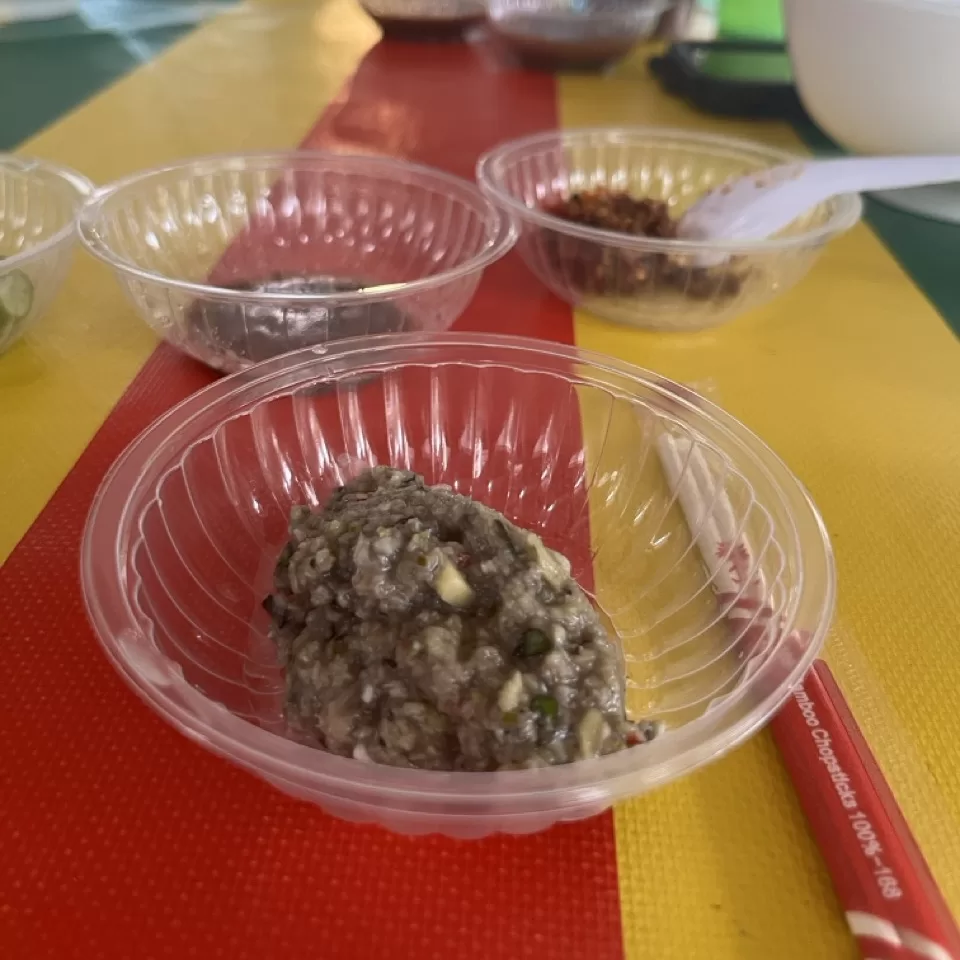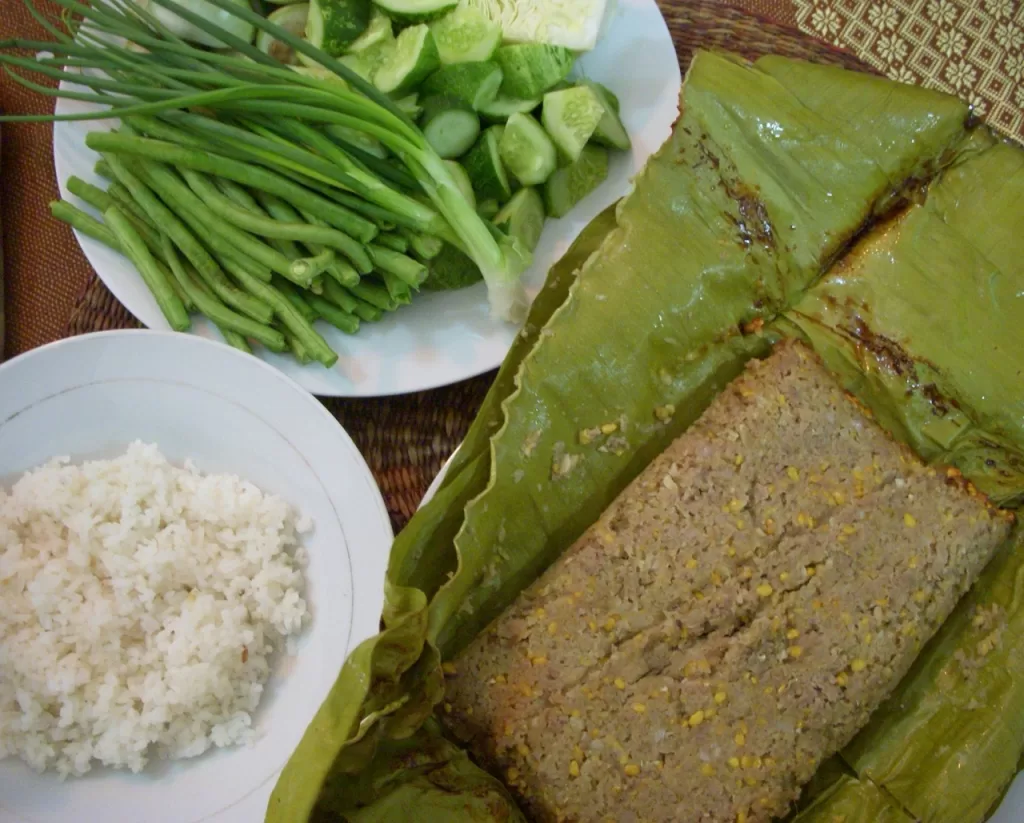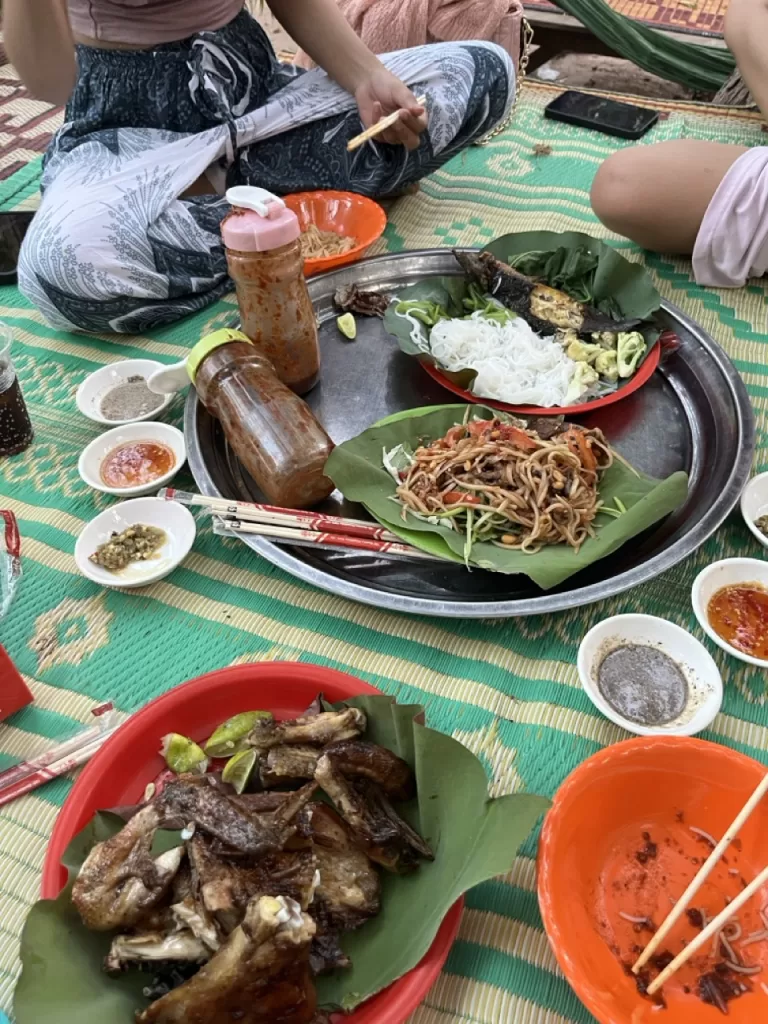So, you’ve arrived in Cambodia and you’ve visited the beautiful historic temples of Angkor Wat, but you’re also a culinary adventurer, not just a temple explorer! You’ve searched high and low for the mystical traditional Cambodian dish with a similar vibe to Marmite – you either love it or you hate it. It’s time to plunge head-first into the world of prahok, Cambodian fermented fish paste. If you have been to a market or ever eaten with people in Cambodia, most likely this pungent delicacy has been put before you. But what exactly is it, and how is prahok consumed? Let’s find out!
The proper Khmer word for this delicious dish is ប្រហុក and can be written in multiple ways in English, so we’re going to use Prahok/Prohok interchangeably in this article!
What is Prahok/Prohok?
Prohok is a fermented fish-based Cambodian condiment, usually from types of freshwater fish such as snakehead fish. It has a pungent smell and distinctive flavor, for which reason it is sometimes referred to as “Cambodian cheese”. The dish originated as a way to ferment fish to store for times when fresh fish was not available, so the Cambodian people would have a constant source of protein throughout the year.

How Is It Made?
The preparation of of this food is both a tradition and an art. From cleaning and gutting the fish to pounding and grinding the flesh into paste. The paste is left sun-dried for at least a day, then sprinkled with salt liberally. Afterwards, the salted mixture was traditionally packed into large clay jars topped with lids of woven bamboo and left to ferment. Fermenting times can range anywhere from 20 days and up to three years-the longer it takes, the stronger the flavour. There are even techniques which involves integrating maggots into the fermenting process, not for the faint of heart!
For many years, prohok had been a part of the Cambodian way of cooking food. Its invention was really indispensable and practical for fish preservation during those periods when catching them was very difficult. But as time went on, eventually, the strong tasting cuisine went beyond its basic usage – it became an ingredient with special characteristics in so many different types of Cambodian recipes. There is even a common saying: “No prahok, no salt,” reflecting how crucially important this food was was in Cambodian culinary circles.
How Is It Eaten?
Prohok is very versatile in Cambodian cuisine. Here’s a few ways that prohok is usually enjoyed:
Prahok Ktis: Made with prohok mixed with minced pork, coconut milk, and spices. It is normally served with fresh vegetables, such as cucumbers, carrots, and cabbage, to dip into the sauce.
Prahok Chien: This is fried with meat, usually beef or pork, and chili peppers. Then served with steamed rice, fresh vegetables, this food is spicy and savory.
Prahok Ang: In this preparation, the paste is wrapped in banana leaves and grilled over coals. The grilling gives a smoky aroma to balance the strong flavor of the fermented fish.
Raw/Prahok Chhau: For the truly adventurous, raw prahok mixed with ingredients such as lemongrass, lime juice, and fresh peppers provides a bold paste. Commonly it is paired with a rare beef steak or utilized as a dipping sauce for vegetables and fruits.

Cultural Significance
But prahok is also so much more than an ingredient, it’s a symbol of Cambodian heritage and resilience. As well as a source of umami flavor, throughout rural areas, it was once an important source of protein when other sources proved unavailable during times of suffering. The preparation process is often shared between families and neighbors and allows people to socialize and preserve traditional processes and recipes from generation to generation.
Today
Today, the smelly (but tasty!) food remains a staple in Cambodian households and is also making its way onto international shores. Chefs are experimenting with the exotic tastes, pushing the pungent ingredient into contemporary dishes and introducing its distinct flavor to a wider audience. For many, despite the smell, prahok adds a depth to dishes that is incomparable and well worth trying for any foodie looking to get a true taste of Cambodia.
Prahok epitomizes the rich traditions of Cambodian cuisine and resourcefulness of its people. For those who have acquired a taste for it, its unique flavor profile is the heart of their cuisine. A taste of prahok for foodies and curious travelers is like a real taste of Cambodia’s gastronomic heritage.

Where Can You Find It?
Absolutely everywhere! From markets, to local restaurants, to any kitchen in a Cambodian household – You won’t be far away from a bowl of prahok! Ask around with the locals and you’ll be able to enjoy this interesting and incredible dish. Whether you enjoy it or not, it’ll certainly give you something to tell your friends back home about!
So, next time you find yourself in Cambodia, don’t shy away from the prahok. Embrace the experience, and you might just discover a new favorite dish!
Have you had it already? Let us know what you thought in the comments below!
Interested in Cambodian history, culture and heritage? You might like our article on The Historical Flag Usage of Cambodia
For more great information or recommendations for Siem Reap and Cambodia in general, don’t forget to follow our Youtube, Instagram, Facebook and TikTok accounts for regular updates!
@morethantemples
Thinking about a trip to Cambodia and looking for someone to help plan your itinerary, or just looking for someone to take you to places you won’t find on regular tours? CLICK HERE to visit our “Tours” page and get in touch. Nightlife tours also available!
Any information in the article above was correct at the time of posting to the best of our knowledge. If you notice any issues or would like to chat to us about the article please get in touch with us via our “ABOUT” page. If you’re the owner of a business we’ve written about and would like to discuss any out of date or incorrect information, please get in touch and we’ll be more than happy to help! Any opinions expressed in our articles are our own and may not be representative of everyone’s experience. If you found this article helpful, please consider heading to our ABOUT page by CLICKING HERE, and leaving us a tip via BuyMeACoffee!



